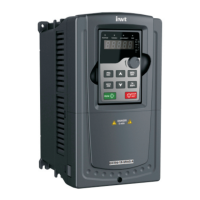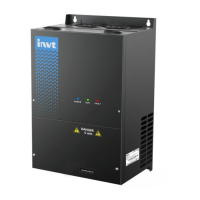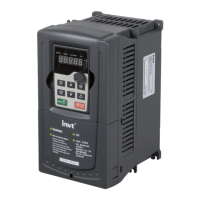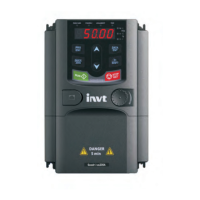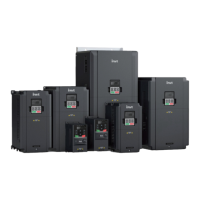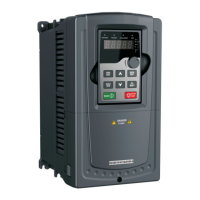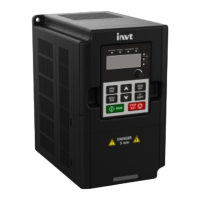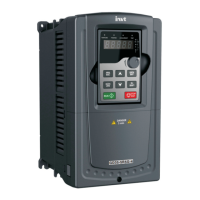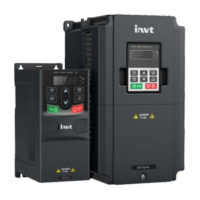Goodrive30 Series VFD Product overview
-6-
consult the local INVT dealer or office for details.
4. Check whether the humidity of the actual usage site exceeds 90% and condensation
occurs. If yes, take additional protective measures.
5. Check whether the actual use site may be exposed to direct sunlight or may have the
chance of ingress of foreign objects. If yes, take additional protective measures.
6. Check whether there is dust, explosive gas, or flammable gas in the actual use site. If
yes, take additional protective measures.
2.1.4 Installation confirmation
Check the following after the VFD installation:
1. Check whether the load ranges of the input power cable and motor cable meet the
actual load requirement.
2. Check whether correct accessories are selected for the VFD, the accessories are
correctly and properly installed, and the installation cables meet the requirements of all
components (including the reactor, input filter, output reactor, output filter, DC reactor,
braking unit and braking resistor).
3. Check whether the VFD is installed on non-flammable materials and the heat-radiating
accessories (such as the reactor and braking resistors) are away from flammable
materials.
4. Check whether all control cables and power cables are run separately and the routing
complies with EMC requirement.
5. Check whether all grounding systems are properly grounded according to the
requirements of the VFD.
6. Check whether all the installation clearances of the VFD meet the requirements in the
operation manual.
7. Check whether the installation conforms to the instructions in the operation manual. It is
recommended that the VFD be installed uprightly.
8. Check whether the external connection terminals of the VFD are tightly fastened and
the torque is appropriate.
9. Check whether there are screws, cables, or other conductive items left in the VFD. If
yes, get them out.
2.1.5 Basic commissioning
Complete the basic commissioning as follows before the actual use of the VFD:
1. Autotuning. If possible, de-coupled from the motor load to start dynamic autotuning. Or
if not, static autotuning is available.
2. Adjust the ACC/DEC time according to the actual running of the load.
3. Commissioning the device via jogging and check that the rotation direction is as
required. If not, change the rotation direction by changing the wiring of motor.
4. Set all control parameters and then operate.
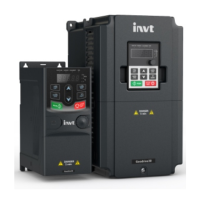
